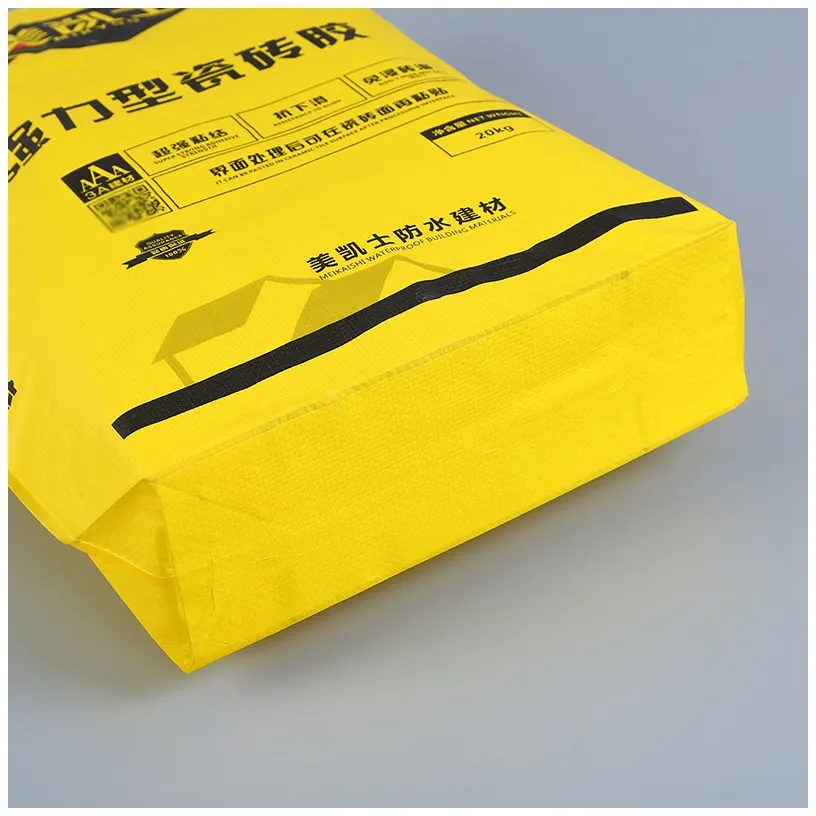
In the packaging industry, woven bags have become an essential part of ensuring the safe transport and storage of various products. Two common types of woven bags are Moisture Proof Woven bags and Waterproof Woven Bags. Though they might seem similar, there are key differences in their functionality and applications. In this blog post, we will explore the differences between these two types of bags, analyze their features, and discuss future trends in the industry focusing on material sustainability and customization to meet diverse market demands.
Differences Between Moisture Proof Woven Bags and Waterproof Woven Bags
While both types of bags serve to protect contents from moisture, their construction and capabilities differ significantly.
Moisture Proof Woven Bags are designed to resist moisture penetration to a certain degree. They typically utilize advanced manufacturing techniques that incorporate multiple layers, such as a moisture barrier film, which helps keep the contents dry. These bags are ideal for products that require protection from humidity or condensation but are not exposed to significant amounts of water.
Waterproof Woven Bags, on the other hand, provide a higher level of protection. They are constructed using specialized materials and processes that prevent water from entering the bag under various conditions. This makes them suitable for transporting goods that may be submerged or exposed to heavy rain, such as chemicals, fertilizers, or construction materials.
| Feature | Moisture Proof Woven Bags | Waterproof Woven Bags |
|---|---|---|
| Moisture Resistance Level | Moderate | High |
| Typical Materials | PP with moisture barrier | Heavy-duty PP or PE |
| Applications | Food packaging, grains | Chemicals, construction |
| Cost | Lower | Higher |
| Customization Options | Available | Limited |
Functional Strength: Which is Superior?
When comparing the functional strengths of Moisture Proof Woven Bags versus Waterproof Woven Bags, the choice ultimately depends on the specific requirements of the application. For instance, if the primary concern is humidity control, Moisture Proof Woven Sacks are more than adequate. However, if exposure to water is a risk, Waterproof Woven Bags provide necessary protection.
The strength of these bags also lies in their construction. Moisture Proof PP Bags usually incorporate high-quality polypropylene (PP) that is woven tightly to enhance durability, while waterproof options might use a combination of PP and polyethylene (PE) to create a more robust barrier.
Future Trends in Woven Bag Development
As the packaging industry evolves, several trends are emerging that influence the future of woven bags, particularly concerning sustainability and customization.
1. Material Sustainability
The demand for sustainable packaging solutions is on the rise. Manufacturers are increasingly focused on using recyclable and biodegradable materials in their woven bags. This shift not only caters to environmentally conscious consumers but also complies with stricter regulations regarding waste management. For instance, innovative approaches include using recycled PP materials and developing multi-wall woven bags that reduce environmental impact while maintaining performance.
2. Material Degradability
In addition to recyclability, there is a growing interest in the development of biodegradable woven bags. These bags decompose more efficiently than traditional materials, minimizing their ecological footprint. Companies like VidePak are exploring advanced technologies to create biodegradable options for both Moisture Proof Woven Bags and Waterproof Woven Bags.
3. Customization for Diverse Applications
To meet the diverse needs of various industries, customization is becoming increasingly important. Businesses are looking for solutions tailored to their specific applications, whether it’s for agricultural products, chemicals, or food items. Manufacturers are now offering a range of customizable options, from bag size and shape to printing and branding. This adaptability ensures that each industry can find a suitable packaging solution that not only meets functional needs but also aligns with brand identity.
Meeting Diverse Market Demands
The modern market demands versatility, which is why many companies are investing in research and development to create bags that can cater to different sectors. The packaging of products is not one-size-fits-all; rather, it requires specific features tailored to the industry it serves. For example:
- Agricultural Sector: Here, Moisture Proof Woven Sacks are essential for preserving the quality of grains and seeds, protecting them from moisture during storage and transport.
- Construction Industry: The use of Waterproof Woven Bags is critical for storing and transporting materials that may come into contact with water, such as cement and aggregates.
- Food Industry: Both types of bags are utilized, but moisture-proof variants are favored for packaging food items that require humidity control.
Conclusion
The packaging industry is witnessing significant evolution driven by the increasing demand for sustainable and customizable solutions. As companies strive to adapt to these changes, understanding the differences between Moisture Proof Woven Bags and Waterproof Woven Bags is essential for making informed decisions that align with industry requirements and consumer expectations. Emphasizing sustainable materials, biodegradability, and tailored solutions will be critical in meeting the future demands of a diverse market. For more information on how moisture-proof solutions can enhance your packaging needs, visit Moisture Proof Woven bags.